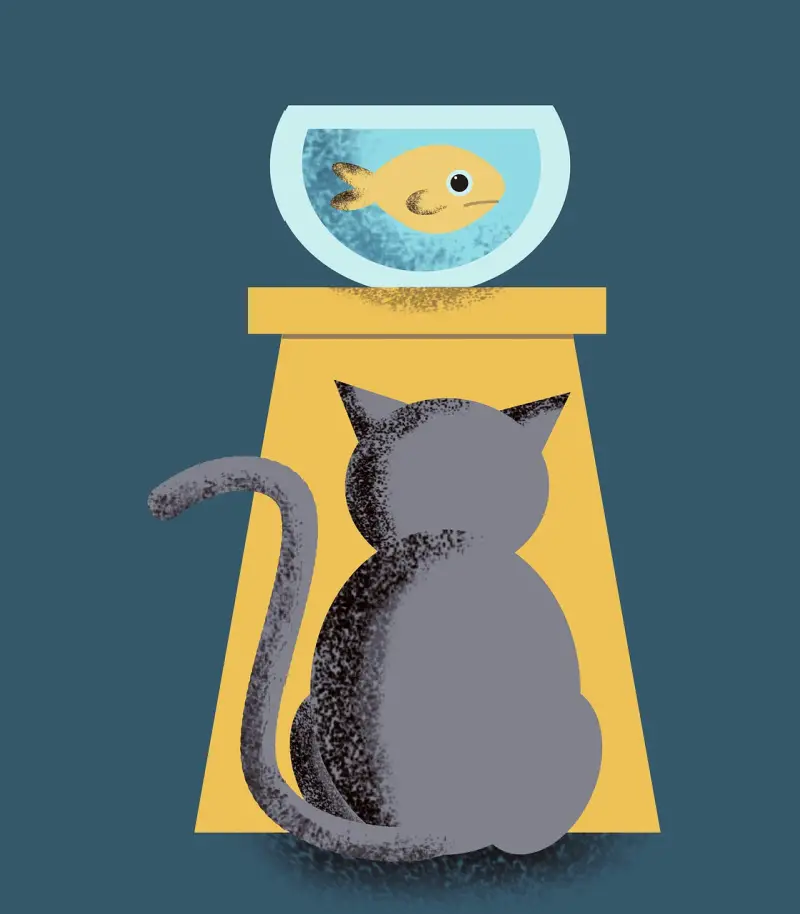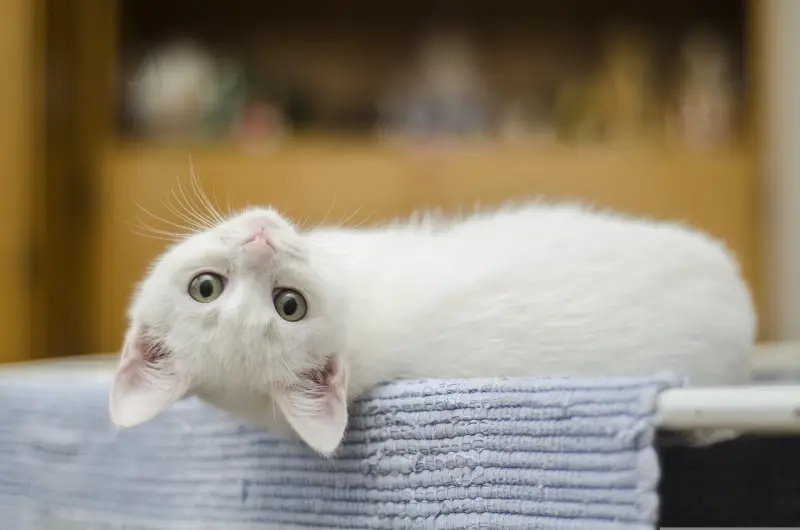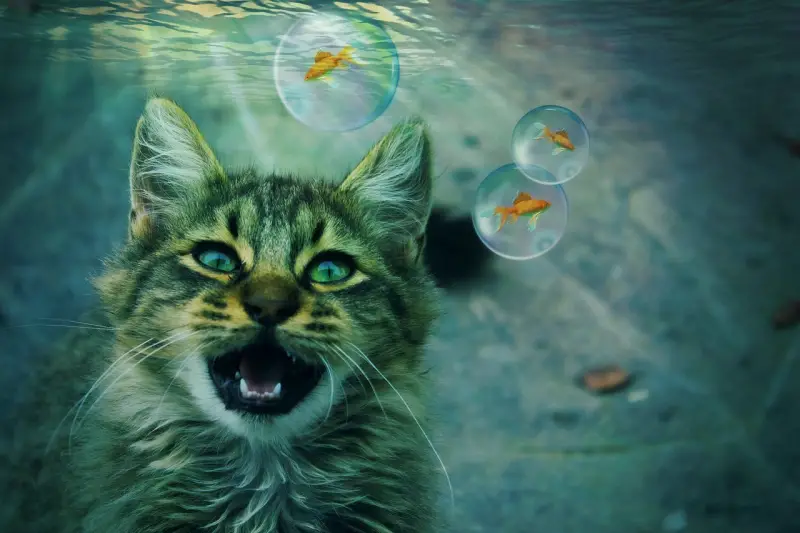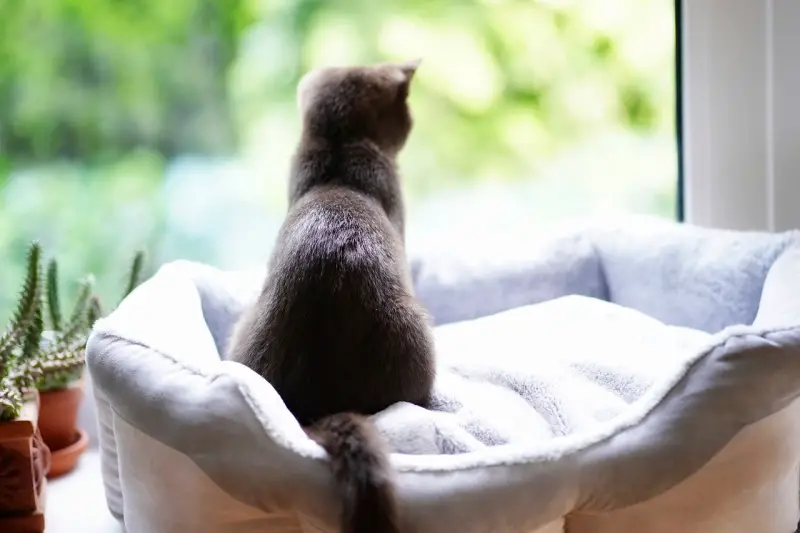Whether you’re bringing a fish tank into a home with a cat, or vice versa, this article has everything you need to know to help them peacefully cohabitate.
You’ll learn five of the best ways to keep even the most determined felines out of the fish tank and away from your fish.

Whether you attribute it to the popularity of Finding Nemo or the proliferation of beautiful, accessible, affordable freshwater fish, there’s no doubt that fishkeeping has become more popular as a hobby in recent decades.
This has led to a rise in the number of housecats cohabitating with fish tanks, and an increasing urgency to the age-old question: How on Earth do you keep a cat out of a fish tank?
1. Use a tank lid or other covering to prevent access
This is perhaps the gold standard of cat-proofing a fish tank: It’s obvious, easy, cheap, and incredibly effective. Many fish tanks already come with a lid, or you can fit your tank with a makeshift covering of wire mesh or something similar, which will continue to let light and air into your fish tank. This will prevent your cat from batting at or pulling your fish from the tank, and also stop your cat from drinking from the tank, which can be dangerous for them. The one problem with lids is that your cat may find them a perfect place to lay down, especially if your tank is well-heated and the lid is warm. This can stress out your fish, so you’ll have to find a way to keep your cat away from the tank entirely.

2. Place the tank somewhere inaccessible
Inaccessible is a tricky word with cats, given their willingness and ability to jump, climb, squeeze, and seemingly fly into spaces that should, by all accounts, be impossible for them to reach. You could set up your fish tank in a room your cat doesn’t have access to, but this may not be possible given the size of the tank or your house. Putting the tank in a high place is also tricky, as it makes it harder to see and service and also increases the possibility that it could fall and seriously injure someone. However, there are still ways to position your tank to make it less accessible to your cat. Move furniture your cat can use to jump at the tank, and place as many sides of the tanks as possible against walls.

3. Tuck away anything that dangles off the tank or table
With the amount of electrical extras – filters, air pumps, heaters, lights – required to maintain a fish tank, it’s no surprise that they are often resplendent with dangling wires and electrical cords. Some people also want to put a blanket or tablecloth under the tank to protect their table or more easily catch leaks. However, all of these tantalizing things hanging over their heads can be highly tempting to a cat, who may try to catch or play with them. Unfortunately, even a small cat giving a sharp tug on a wire or tablecloth may be enough to send the tank crashing to the ground – or on top of your cat. Wrap up all of your wires and place them all on the table or stand, or connect them all to a single power strip with a short cord your cat can’t reach. You can tape the edges of a dangling table cover to the bottom of the table, or simply choose a smaller cover that won’t hang over the edges into cat-tempting territory.

4. Find other ways to fill your cat’s needs
Your cat isn’t trying to mess with your fish tank simply because they’re mischievous or like being troublesome; they’re engaging in these behaviors to try to meet some sort of need or fulfill a desire. Most commonly, this is their natural predatory instincts, telling them to attack and eat any small, quickly moving thing. If you can fulfill this need by distracting your cat with an attainable “prey,” they will most likely start to leave your fish tank alone. Small, independently moving toys are perfect for this. Your cat may also enjoy watching your fish swim because it’s stimulating for them to watch something move when they’re alone in the house much of the time. Create a space where they can stare out the window, or see if they’re interested in nature documentaries or purpose-designed cat content on the television. If your cat likes drinking from the tank, it may be because the water is moving, or because they’re dehydrated. Cats tend to prefer flowing water, so a fountain-type water bowl may solve this problem, or simply increasing the amount of water you offer your cat.

5. Use deterrents to train your cat
Contrary to popular wisdom, cats are indeed trainable, and there are many deterrents you can use to form a negative association in their minds with the fish tank. Commercially available scat mats, either the kind that use a small electrical pulse or ones that provide an unpleasant, spiky surface, can be put out to keep your cat off the tank stand and the tank itself. For the budget-conscious, you can also make your own DIY “scat mats” by laying out sheets of aluminum foil, which make a crinkly sound most cats hate, or using double-sided tape or something else sticky; cats dislike the feeling of stickiness on their paws. These can be a pain to replace, but in theory, once your cat has tried it a few times and gotten the unpleasant result (sound or stickiness), they will learn to leave the fish tank alone.
The final deterrent worth trying, and one you may actually enjoy putting out, is a scent deterrent, which you can also get commercially or make yourself. Citrus scents like lemon, lime, and orange are all unpleasant to cats and should keep them away from your fish tank.
Fish tanks are often a major attractant for other domestic pets, especially cats, although it is possible that your cat will only be curious about the new tank for a day or two, or even ignore it completely.

If they don’t, though, you’ll be well-prepared to entertain your cat and defend your fish tank.
The post 5 Ways to Cat-Proof Your Fish Tank appeared first on The Purrington Post.




















































